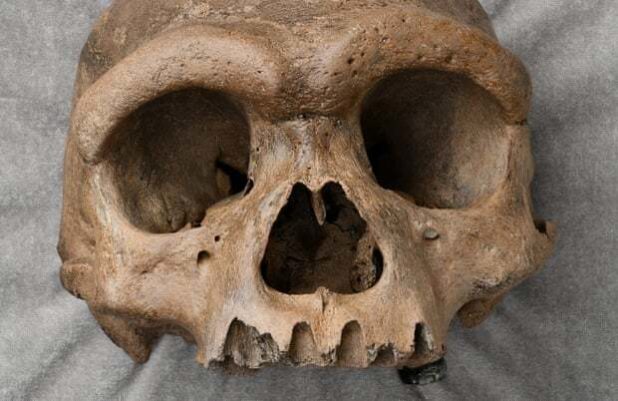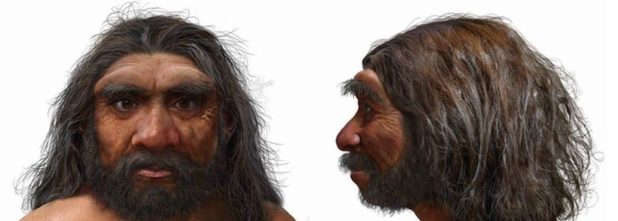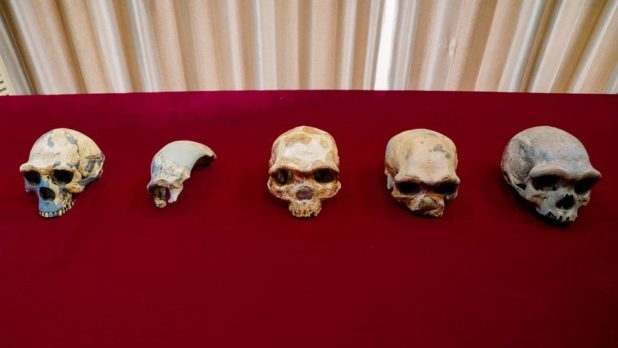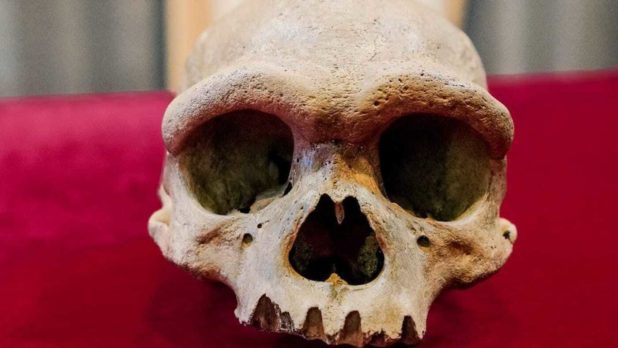
New human, or just another skull from an extinct ape???
You decide!
Chinese researchers have unveiled an ancient skull that could belong to a completely new species of human.
The team has claimed it is our closest evolutionary relative among known species of ancient human, such as Neanderthals and Homo erectus.
Nicknamed “Dragon Man”, the specimen represents a human group that lived in East Asia at least 146,000 years ago.
It was found at Harbin, north-east China, in 1933, but only came to the attention of scientists more recently.
An analysis of the skull has been published in the journal The Innovation.
One of the UK’s leading experts in human evolution, Prof Chris Stringer from London’s Natural History Museum, was a member of the research team.
“In terms of fossils in the last million years, this is one of the most important yet discovered,” he told BBC News.
“What you have here is a separate branch of humanity that is not on its way to becoming Homo sapiens (our species), but represents a long-separate lineage which evolved in the region for several hundred thousand years and eventually went extinct.”
Artist’s impression of Homo longi.
The researchers say the discovery has the potential to rewrite the story of human evolution. Their analysis suggests that it is more closely related to Homo sapiens than it is to Neanderthals.
They have assigned the specimen to a new species: Homo longi, from the Chinese word “long”, meaning dragon.
“We found our long-lost sister lineage,” said Xijun Ni, a professor at the Chinese Academy of Sciences and Hebei GEO University in Shijiazhuang.
He told BBC News: “I said ‘oh my gosh!’ I could not believe that it was so well preserved, you can see all the details. It is a really amazing find!”
The skull is huge compared with the average skulls belonging to other human species, including our own. Its brain was comparable in size to those from our species.
Dragon Man had large, almost square eye sockets, thick brow ridges, a wide mouth, and oversized teeth. Prof Qiang Ji, from Hebei GEO University, says it is one of the most complete early human skull fossils ever discovered.
“It has a mosaic combination of primitive and (more modern features), setting itself apart from all the other species of human,” the researcher explained.
The scientists believe that Dragon Man was powerfully-built and rugged. But little is known about how he lived, because his skull was removed from the site in which it was found.
That means that there is currently no archaeological context, such as stone tools, or other elements of culture.
The skull was reportedly discovered in 1933 by a construction worker helping build a bridge on the Songhua river running through Harbin, in Heilongjiang province, which translated means Black Dragon River, hence the new human’s name..
The city was under Japanese occupation at the time. Suspecting its cultural value, the Chinese worker smuggled it home, to keep it out of the hands of occupiers. He hid it at the bottom of his family’s well, where it remained for around 80 years. The man told his family about the skull before he died, which is how it eventually got into the hands of scientists.
“The researchers claim the form of ancient human on the far left may have evolved into the relatively modern Dragon Man on the far right over millions of years.”
Dragon Man joins a number of early human remains uncovered in China that have proven difficult to categorise. These include remains from Dali, Jinniushan, Hualongdong and the Xiahe jawbone from the Tibetan Plateau.
There has been a fierce debate about whether these remains represent primitive examples of Homo sapiens, Neanderthals, a human group called the Denisovans, or something else entirely.
Frankly, this stuff about “oh wow, we found a new evolutionary item” is generally not believable.
What is the difference between a “new human skull” and the skull of an extinct ape?
The answer tends to be “the eye of the beholder.”
 Daily Stormer The Most Censored Publication in History
Daily Stormer The Most Censored Publication in History





